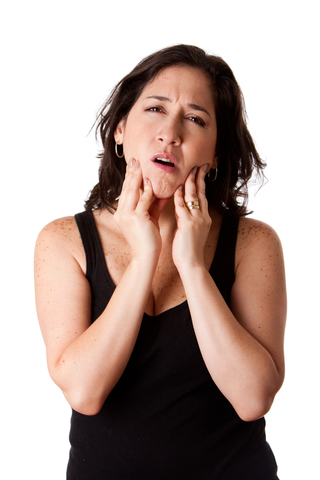January 22nd, 2019

It’s common knowledge that you should get your teeth cleaned every six months. But do you know why that timing is crucial? Studies have shown that your oral health connects directly to the rest of your body. Over time, an unhealthy mouth can cause trouble in other parts of your general system.
Undergoing a regular cleaning every six months at our Marysville, WA office is vital. During your dental checkups, we remove plaque that collects on your teeth and around your gums. If the plaque gets left in place for an extended period, inflammation can develop and may lead to painful gum diseases such as gingivitis and periodontal disease.
According to the American Academy of Periodontology, periodontal disease has been linked to increased risk for health conditions such as heart disease, stroke, diabetes, inflammation, and osteoporosis. Bacteria from your mouth can spread throughout the rest of your body. So a healthy mouth leads to a healthy body.
Regular checkups can prevent issues from arising in your mouth if problems are caught early by Dr. Kelly Peterson. If you have been avoiding the dentist, you could be making issues worse for yourself in the long haul. Generally, a dentist will go over a few routine matters during your checkup. They might include taking X-rays, checking for gum disease and tooth decay, examining your bite, inspecting your head and neck for swelling, and of course performing a thorough cleaning of your teeth and gums to remove built-up plaque and tartar. All of these routine practices are worthwhile when it comes to keeping your oral health in top shape.
Now that you know the importance of getting your teeth checked every six months, you should be sure to schedule your next appointment with Northwest Smile Design at our Marysville, WA location. Keeping your mouth healthy will prevent any form of bacteria from spreading to the rest of your body. If you have any questions or concerns regarding your oral health, don’t hesitate to call and our staff will be happy to assist you.
January 15th, 2019

Anyone who has had a compromised tooth knows that the amount of discomfort it causes can be extremely unpleasant. Although no one looks forward to a root canal, this procedure is actually the best way to both eliminate pain and save your tooth. If the pulp inside your tooth is infected or damaged, a root canal is probably necessary.
The process is relatively straightforward and can take place over one or two visits to our Marysville, WA office. The area around the tooth is numbed, the pulp is removed from the inside of the tooth, the area is thoroughly cleaned, and a temporary filling or crown is placed on the tooth to prevent bacteria and food from entering the site. A permanent crown will be fabricated and affixed to the tooth at a later visit.
Once your root canal is finished, recovery is usually only a matter of days. What can you to keep yourself as comfortable as possible during that time?
- The area around the affected tooth might be somewhat sore or sensitive for a few days. Let us know, and we can talk about medication to reduce pain and inflammation. If you are prescribed antibiotics, be sure to take the entire course of medication as directed.
- Taking an ibuprofen (if this is a pain reliever that is safe for you) before the anesthetic wears off will reduce the soreness in the hours immediately after the procedure.
- Wait until the numbness is gone before eating to avoid biting down on a temporary filling (or your tongue). Hot drinks are also best avoided.
- Avoid chewing on the side of the affected tooth until the restoration is complete. A soft diet is recommended for the first several days—chewy, sticky, and crunchy foods should wait.
- Continue with regular brushing and flossing.
- Call Dr. Kelly Peterson immediately if you experience severe pain or visible swelling, if you have an allergic response to medication, if your bite feels uneven, or if you lose the temporary filling.
Follow the instructions we’ll give you carefully, and feel free to call us with any concerns. We want to ensure that your root canal is as pain-free and worry-free as possible.
January 8th, 2019

TMD occurs when your bite is not properly aligned. It can cause the jaw to experience unnatural stresses and prevent it from resting properly when your mouth is closed. If you have TMD, you may have noticed a clicking noise when you chew, speak, or yawn; you may even experience pain and discomfort during these actions. In some cases, your jaw may feel “locked” following a wide yawn.
TMD can cause pain and discomfort in the jaw as well as headaches that occur when the muscles that help the joints open and close become overtired. But beyond the pain and discomfort, TMD can also cause serious dental problems if left untreated.
Because TMD is associated with a poor bite or malocclusion (which literally translated means “bad closure”), your teeth do not meet properly. As a result, extra tension and stress may be placed on your teeth, resulting in chips and cracks that allow cavities to form and may even result in tooth loss. Over time, TMD can cause teeth to break, which requires cosmetic treatment to rebuild your healthy smile, and ensure the broken tooth and its neighbors are protected from decay.
While treating TMD used to mean expensive and invasive surgery to reposition or even rebuild the jaw joints, today’s approach at Northwest Smile Design is much more patient-friendly. By restoring broken, chipped, or cracked teeth, replacing missing teeth, and using braces or other dental devices, Dr. Kelly Peterson and our team can help realign your jaw so it’s able to function properly, and eliminate pain and discomfort. And there’s more good news: By restoring damaged teeth and tooth surfaces and straightening crooked teeth, you’re also left with a more attractive smile once treatment is completed.
Every patient is different, and that means your course of treatment will be different too. After a thorough examination of your teeth and jaw, our experienced staff at Northwest Smile Design will work with you to develop a treatment plan that will have you feeling better – and looking better – sooner than you ever expected. Don’t let your untreated TMD cause more pain and problems; give us a call at our convenient Marysville, WA office today to schedule a consultation.
January 1st, 2019

The beginning of a new year is the perfect opportunity for a fresh start for you and your smile. At Northwest Smile Design, a brighter smile is quick and easy!
Given the latest in whitening technology, whiter teeth are only an appointment away. Teeth whitening is a safe, quick, and inexpensive way to create the dream smile you’ve always desired. We can offer a safe method that corrects tooth discolorations that may have been caused by staining, aging, or chemical effects.
So, start the new year off right and get a whiter smile today! Give us a call at our convenient Marysville, WA office to schedule an appointment!










 Website Powered by Sesame 24-7™
Website Powered by Sesame 24-7™